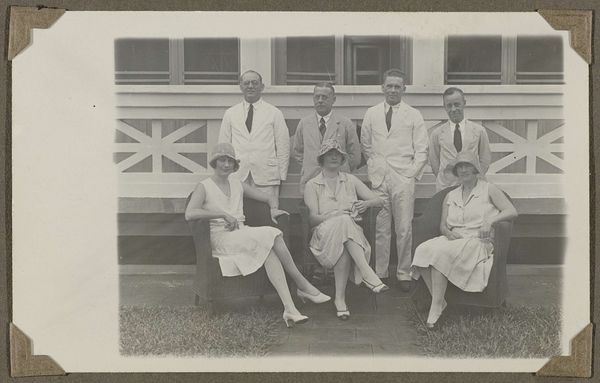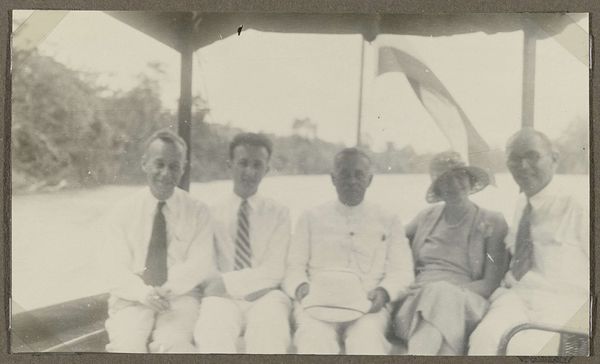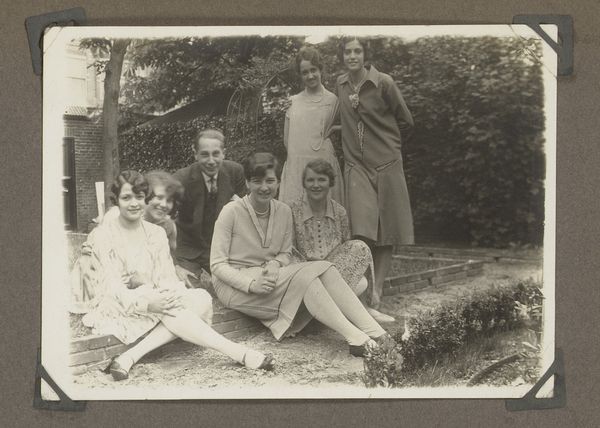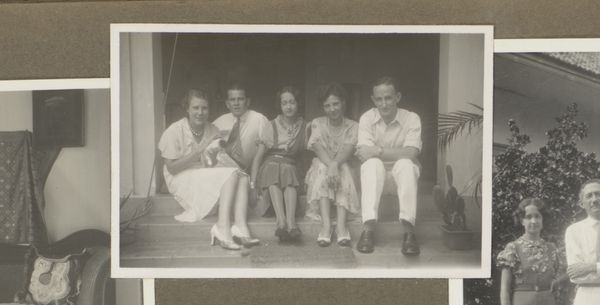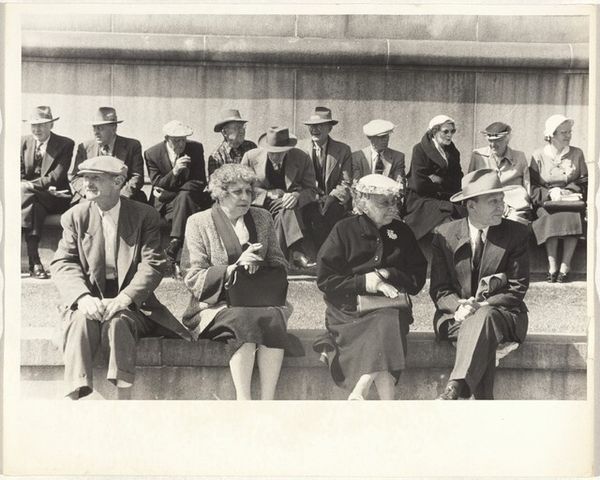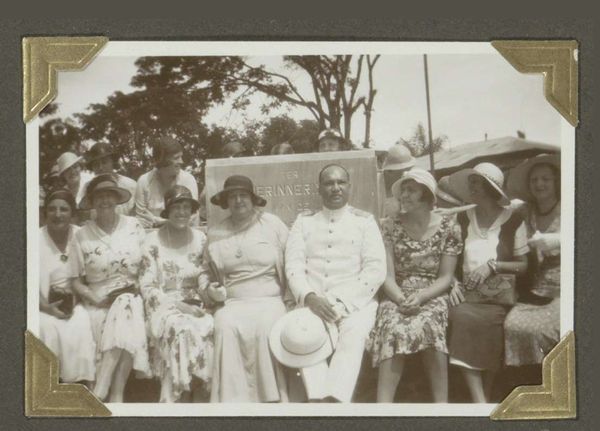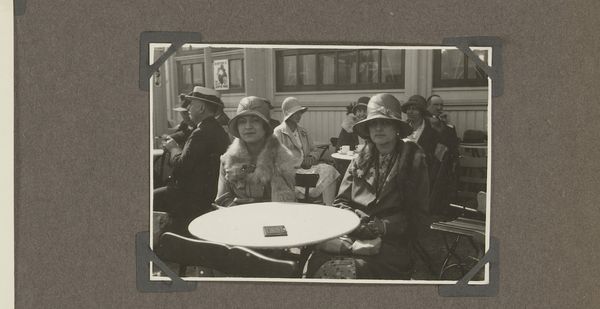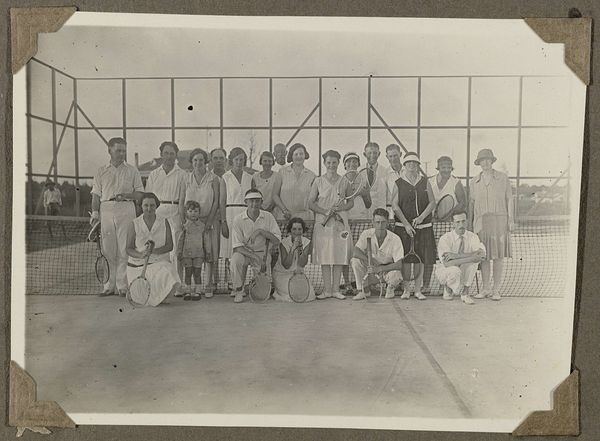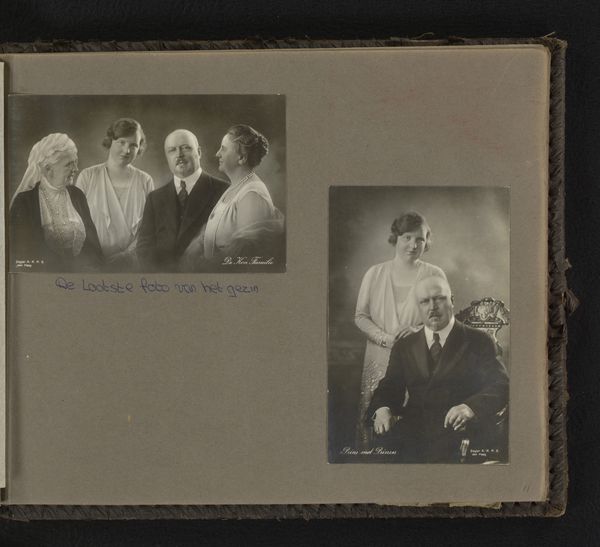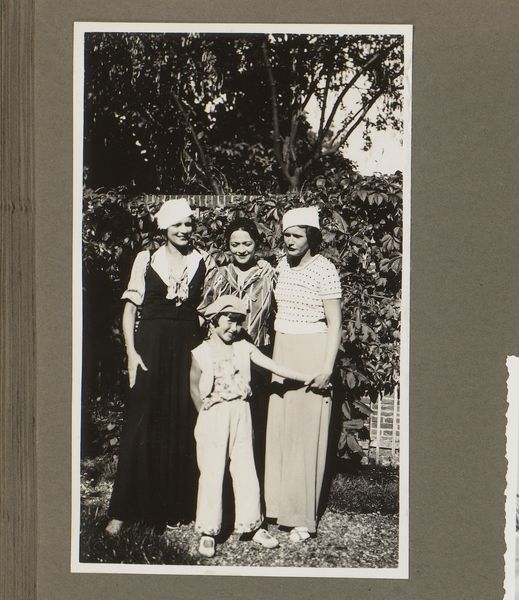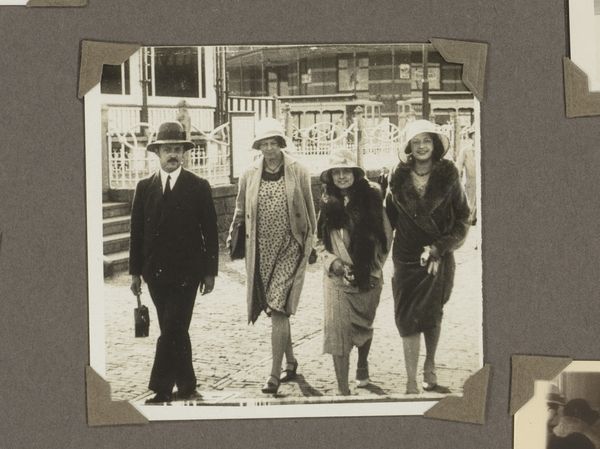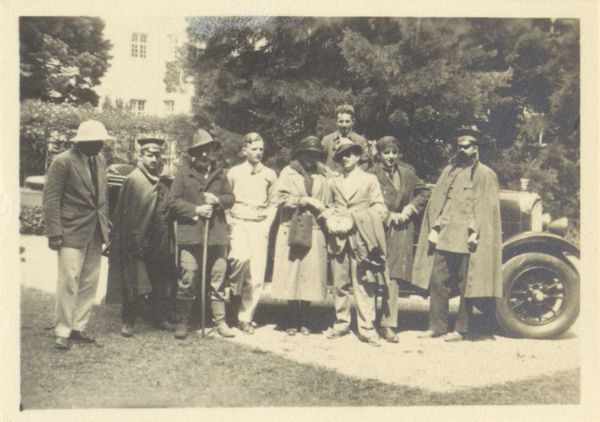
photography
#
portrait
#
archive photography
#
photography
#
historical photography
#
portrait reference
#
modernism
Dimensions: height 67 mm, width 112 mm
Copyright: Rijks Museum: Open Domain
Editor: This photograph, titled "Echtpaar Jetten met gasten op een boot" which translates to "The Jetten Couple with guests on a boat", was taken sometime between 1925 and 1927. It's an older picture and it's fascinating to see how people presented themselves back then. How do you interpret this work? Curator: What immediately strikes me is the visual coding of class and leisure in this photograph. Taken in the interwar period, this image captures a specific moment of bourgeois leisure, but the seemingly straightforward composition subtly reinforces social hierarchies. What does it mean to see them on a boat, a potent symbol of travel and privilege? Notice the sharp contrast between the impeccable white suit and the more ‘relaxed’ attire of the other guests. It's coded but worth deconstructing it. Editor: That's interesting. I hadn’t thought about how the clothing choices might reflect their social standing or aspirations. Is it safe to read into the fact that this is shot on a boat? Curator: Absolutely! Boats at this time were associated with wealth, escape, and exploration, all concepts deeply entangled with colonialism and class divisions. By situating themselves on a boat, they’re not merely enjoying a leisurely ride, they're performing a specific kind of identity that’s inextricably linked to broader socio-economic structures. Think about who *didn't* have access to such a life. Also, the women here are relevant when viewed from a feminist point of view; it gives some context to female agency in society at this moment. Editor: That makes me think about the perspective. How was a photo like this used and seen by the public at this moment? Curator: These images, though seemingly personal, participated in constructing and reinforcing cultural norms, specifically concerning gender, class, and race. How do we reckon with images that romanticize or normalize inequality? Whose stories are missing here? Thinking intersectionally, how might this scene have been different for people of color? Editor: So much to consider! I’m starting to see this photograph as more than just a family portrait; it’s a window into the complexities of its time. Curator: Exactly! By examining such images critically, we confront uncomfortable truths about the past and perhaps start addressing the present.
Comments
No comments
Be the first to comment and join the conversation on the ultimate creative platform.

